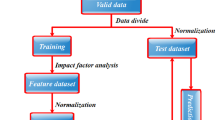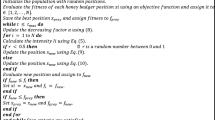Abstract
Hospitals are massive consumers of energy, and their cooling systems for HVAC and sanitary uses are particularly energy-intensive. Forecasting the thermal cooling demand of a hospital facility is a remarkable method for its potential to improve the energy efficiency of these buildings. A predictive model can help forecast the activity of water-cooled generators and improve the overall efficiency of the whole system. Therefore, power generation can be adapted to the real demand expected and adjusted accordingly. In addition, the maintenance costs related to power-generator breakdowns or ineffective starts and stops can be reduced. This article details the steps taken to develop an optimal and efficient model based on a genetic methodology that searches for low-complexity models through feature selection, parameter tuning and parsimonious model selection. The methodology, called GAparsimony, has been tested with neural networks, support vector machines and gradient boosting techniques. This new operational method employed herein can be replicated in similar buildings with comparable water-cooled generators, regardless of whether the buildings are new or existing structures.
Access this chapter
Tax calculation will be finalised at checkout
Purchases are for personal use only
Similar content being viewed by others
References
OECD/IEA: International energy agency (2014)
IDAE, Fenercom: Guía de ahorro y eficiencia energética en hospitales. Fenercom (2010)
Yoon, S.H., Kim, S.Y., Park, G.H., Kim, Y.K., Cho, C.H., Park, B.H.: Multiple power-based building energy management system for efficient management of building energy. Sustain. Cities Soc. 42, 462–470 (2018)
Missaoui, R., Joumaa, H., Ploix, S., Bacha, S.: Managing energy smart homes according to energy prices: analysis of a building energy management system. Energy Build. 71, 155–167 (2014)
Palme, M.: The possible shift between heating and cooling demand of buildings under climate change conditions: are some mitigation policies wrongly understood? In: Sayigh, A. (ed.) Mediterranean Green Buildings & Renewable Energy, pp. 417–422. Springer International Publishing, Cham (2017). https://doi.org/10.1007/978-3-319-30746-6_30
Saeedi, M., Moradi, M., Hosseini, M., Emamifar, A., Ghadimi, N.: Robust optimization based optimal chiller loading under cooling demand uncertainty. Appl. Therm. Eng. 148, 1081–1091 (2019)
Wang, L., Lee, E.W., Yuen, R.K.: Novel dynamic forecasting model for building cooling loads combining an artificial neural network and an ensemble approach. Appl. Energy 228, 1740–1753 (2018)
Abdel-Aal, R.: Modeling and forecasting electric daily peak loads using abductive networks. Int. J. Electr. Power Energy Syst. 28(2), 133–141 (2006)
Chitsaz, H., Shaker, H., Zareipour, H., Wood, D., Amjady, N.: Short-term electricity load forecasting of buildings in microgrids. Energy Build. 99, 50–60 (2015)
Shepero, M., van der Meer, D., Munkhammar, J., Widén, J.: Residential probabilistic load forecasting: a method using Gaussian process designed for electric load data. Appl. Energy 218, 159–172 (2018)
Li, Y., Che, J., Yang, Y.: Subsampled support vector regression ensemble for short term electric load forecasting. Energy 164, 160–170 (2018)
Yang, Y., Che, J., Deng, C., Li, L.: Sequential grid approach based support vector regression for short-term electric load forecasting. Appl. Energy 238, 1010–1021 (2019)
Bagnasco, A., Fresi, F., Saviozzi, M., Silvestro, F., Vinci, A.: Electrical consumption forecasting in hospital facilities: an application case. Energy Buildings 103(Complete), 261–270 (2015)
Jetcheva, J.G., Majidpour, M., Chen, W.P.: Neural network model ensembles for building-level electricity load forecasts. Energy Build. 84, 214–223 (2014)
Hsu, Y.Y., Tung, T.T., Yeh, H.C., Lu, C.N.: Two-stage artificial neural network model for short-term load forecasting. IFAC-PapersOnLine 51(28), 678–683 (2018). 10th IFAC Symposium on Control of Power and Energy Systems CPES 2018
Singh, P., Dwivedi, P., Kant, V.: A hybrid method based on neural network and improved environmental adaptation method using controlled gaussian mutation with real parameter for short-term load forecasting. Energy 174, 460–477 (2019)
Avalos, M., Grandvalet, Y., Ambroise, C.: Parsimonious additive models. Comput. Stat. Data Anal. 51(6), 2851–2870 (2007)
Li, H., Shu, D., Zhang, Y., Yi, G.Y.: Simultaneous variable selection and estimation for multivariate multilevel longitudinal data with both continuous and binary responses. Comput. Stat. Data Anal. 118, 126–137 (2018)
Husain, H., Handel, N.: Automated machine learning. A paradigm shift that accelerates data scientist productivity, May 2017
Feurer, M., Klein, A., Eggensperger, K., Springenberg, J., Blum, M., Hutter, F.: Efficient and robust automated machine learning. In: Cortes, C., Lawrence, N.D., Lee, D.D., Sugiyama, M., Garnett, R. (eds.) Advances in Neural Information Processing Systems vol. 28, pp. 2962–2970. Curran Associates, Inc. (2015)
Sanz-Garcia, A., Fernandez-Ceniceros, J., Antonanzas-Torres, F., Pernia-Espinoza, A., Martinez-de Pison, F.J.: GA-PARSIMONY: A GA-SVR approach with feature selection and parameter optimization to obtain parsimonious solutions for predicting temperature settings in a continuous annealing furnace. Appl. Soft Comput. 35, 13–28 (2015)
Urraca, R., Sodupe-Ortega, E., Antonanzas, J., Antonanzas-Torres, F., de Pison, F.M.: Evaluation of a novel GA-based methodology for model structure selection: the GA-PARSIMONY. Neurocomputing 271(Supplement C), 9–17 (2018)
Sanz-García, A., Fernández-Ceniceros, J., Antoñanzas-Torres, F., Martínez-de Pisón, F.J.: Parsimonious support vector machines modelling for set points in industrial processes based on genetic algorithm optimization. In: Herrero, Á., et al. (eds.) International Joint Conference SOCO13-CISIS13-ICEUTE13. Advances in Intelligent Systems and Computing, vol. 239, pp. 1–10. Springer, Cham (2014). https://doi.org/10.1007/978-3-319-01854-6_1
Urraca, R., Sanz-Garcia, A., Fernandez-Ceniceros, J., Sodupe-Ortega, E., Martinez-de-Pison, F.J.: Improving hotel room demand forecasting with a hybrid GA-SVR methodology based on skewed data transformation, feature selection and parsimony tuning. In: Onieva, E., Santos, I., Osaba, E., Quintián, H., Corchado, E. (eds.) HAIS 2015. LNCS (LNAI), vol. 9121, pp. 632–643. Springer, Cham (2015). https://doi.org/10.1007/978-3-319-19644-2_52
Fernandez-Ceniceros, J., Sanz-Garcia, A., Antonanzas-Torres, F., de Pison, F.M.: A numerical-informational approach for characterising the ductile behaviour of the T-stub component. Part 2: Parsimonious soft-computing-based metamodel. Eng. Struct. 82, 249–260 (2015)
Antonanzas-Torres, F., Urraca, R., Antonanzas, J., Fernandez-Ceniceros, J., de Pison, F.M.: Generation of daily global solar irradiation with support vector machines for regression. Energy Convers. Manag. 96, 277–286 (2015)
Martinez-de-Pison, F.J., Fraile-Garcia, E., Ferreiro-Cabello, J., Gonzalez, R., Pernia, A.: Searching parsimonious solutions with GA-PARSIMONY and XGBoost in high-dimensional databases. In: Graña, M., López-Guede, J.M., Etxaniz, O., Herrero, Á., Quintián, H., Corchado, E. (eds.) ICEUTE/SOCO/CISIS -2016. AISC, vol. 527, pp. 201–210. Springer, Cham (2017). https://doi.org/10.1007/978-3-319-47364-2_20
Sanz-Garcia, A., Fernandez-Ceniceros, J., Antonanzas-Torres, F., Pernia-Espinoza, A., Martinez-de Pison, F.: GA-parsimony. Appl. Soft Comput. 35(C), 13–28 (2015)
Martínez-De-Pisón, F.J.: GAparsimony: GA-based optimization R package for searching accurate parsimonious models (2017). R package version 0.9-1
Author information
Authors and Affiliations
Corresponding author
Editor information
Editors and Affiliations
Rights and permissions
Copyright information
© 2019 Springer Nature Switzerland AG
About this paper
Cite this paper
Dulce, E., Martinez-de-Pison, F.J. (2019). Parsimonious Modeling for Estimating Hospital Cooling Demand to Reduce Maintenance Costs and Power Consumption. In: Pérez García, H., Sánchez González, L., Castejón Limas, M., Quintián Pardo, H., Corchado Rodríguez, E. (eds) Hybrid Artificial Intelligent Systems. HAIS 2019. Lecture Notes in Computer Science(), vol 11734. Springer, Cham. https://doi.org/10.1007/978-3-030-29859-3_16
Download citation
DOI: https://doi.org/10.1007/978-3-030-29859-3_16
Published:
Publisher Name: Springer, Cham
Print ISBN: 978-3-030-29858-6
Online ISBN: 978-3-030-29859-3
eBook Packages: Computer ScienceComputer Science (R0)




